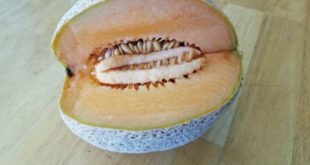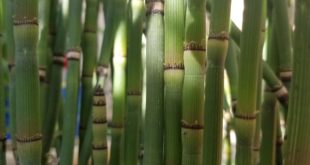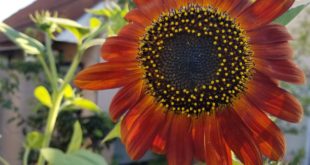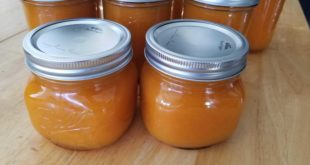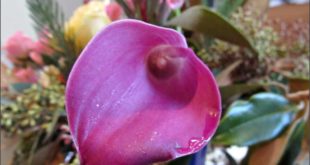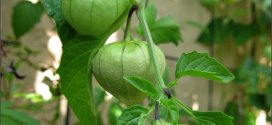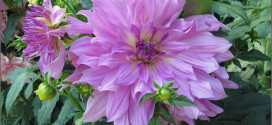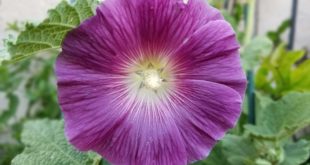In 2019 we planted 8 types of melons (including Honey Rock) in our Sunnyvale garden. For Christmas, Marie had given me a ‘Fruit pack’ of seeds. The Honey Rock melons are up to six inches in diameter with a tough, coarsely netted skin and sweet, flavorful salmon colored flesh. The plants are vigorous, producing five to seven fruits per plant …
Read More »admin
Stuffed Bell Peppers
Stuffed bell peppers, like fritattas, are another of those Anything-Goes recipes. The base is cooked rice, tomatoes, veggies, and cheese. Optionally add ground beef, beyond-beef, beans, corn, or tofu. Season it for any cuisine. Sometimes it is Italian (oregano, basil); Indian (curry, garam masala); or Mexican (cumin, mexican oregano). Many of these ingredients are harvested from our Sunnyvale garden in …
Read More »Equisetum
Equisetum (horsetail, snake grass, scouring-rush, puzzlegrass) is the only living genus in Equisetaceae, a family of vascular plants that reproduce by spores rather than seeds. Native to North America. Equisetum hyemale is a vigorous evergreen perennial with a striking vertical habit with multiple bamboo-like dark green stems arranged in dense clumps. Each stem has vertical ridges and is jointed or …
Read More »July in Our Sunnyvale Garden 2019
July’s garden is full of sunflowers, ripening vegetables and fruit. We were out of town for a few weeks so the garden was on its own — with some help from the extensive drip irrigation.
Read More »Apricot Puree
Our volunteer Blenheim apricot tree produced a lot of fruit this year. Last week, at the end of our harvest, I cut down one branch and harvested over 200 fruits. I tried giving them away on Nextdoor but there were no takers. I froze about a dozen bags of apricot halves. I didn’t want to waste the rest so decided …
Read More »Calla Lily
Calla lilies are easy to grow and add a classy look to perennial gardens, cutting gardens and container plantings. Their smooth, sword-like foliage stays neat and attractive all season long. Native to South Africa, Calla Lilies (Zantedeschia) provide a spectacular effect with their rich, cheerful colors and their breathtaking chalice-shaped flowers (spathe) surrounding a finger-like stalk (spadix). Calla lily flowers …
Read More »Tomatillo – Green
If you’ve sampled a salsa or jam containing these green wonders, you should consider adding tomatillo (toh-mah-tee-yo) plants to your garden. Most years we grow a couple of tomatillo plants along with our tomatoes. Our 2019 tomatillo plants are courtesy of a Sunnyvale garden meetup. Originating in Mexico and Central America, this citrusy plant has been an important food crop …
Read More »June in our Sunnyvale garden 2019
June in our Sunnyvale garden is full of flowers, ripe fruit and ripening vegetables. For more of the story, see below the photo gallery. We have two Blenheim apricot trees. One is a volunteer from a discarded pit. It grows in a two-foot wide trench. It produces hundreds of fruit. Which is good because a couple dozen fruit every day …
Read More »Dahlia
These colorful spiky flowers, native to Mexico, bloom from midsummer to first frost. Each flower has one head per stem. The flowers range in color and size, from the giant 10-inch “dinnerplate” blooms to the 2-inch lollipop-style pompons. We have grown dahlias in our Sunnyvale garden for over 20 years. If you are patient then you can treat the dahlia …
Read More »Hollyhock
Alcea rosea, the common Hollyhock, originated in Asia and the area around the Eastern Mediterranean Sea. These stately beauties belong to the Mallow (Malvaceae) family, which includes 1500 different species. Hollyhocks are hardy between USDA zones 3 and 8 (Sunnyvale). How to Grow Hollyhocks Alcea rosea is variously described as a biennial (having a two-year life cycle), as an annual, …
Read More »